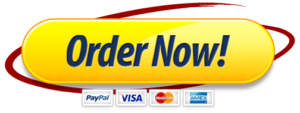ITS 835 UC Intuits Enterprise Risk Management Discussion
Would you implement the same ERM in your current organization (or future organization)?Select AT LEAST 3 other students’ threads and post substantive comments on those threads, evaluating the pros and cons of that students recommendations:post 1:I agree with the implementation of the risk management approach implemented in developing an ideal enterprise risk management. For the company to invest in fire prevention strategies as opposed to dealing with situations once they have already occurred, it was integral for the entire staff at the company to understand and adapt to the different principles of the risk management framework. The approach used to introduce and ensure that they all understood such issues was critical to the companys success, which in turn helped achieve the objective as the company did. Hence, the approach implemented in actualizing the risk management framework was good enough for the company.Notably, different aspects of the ERM implementation were keen on achieving various objectives. However, the only thing I would change about it would be an improvement in staff involved in its development and implementation. Any employee is often enthusiastic about a program to the extent that he or she participated in its development (Hanna et al. 149). Consequently, if only the workers had a hand in development of some of the principles they would consider integral to success of the company, they would have more enthusiasm implementing the project and aiding in the adaptation of the ERM. This does not take away from the managements oversight role, but it improves on the level of cooperation to achieving target change or improvement in a particular process. Considering that the risks available to business vary from one industry to another, I may not end up implementing the same ERM in a future organization. However, the approaches used in the program would be applicable and suffice in any organization since they include a process and not the specific activities involved therein. Therefore, I would invest in the implementation of the process, in addition to an improvement in employee participation in the project.post 2:When implementing their ERM, Intuit emphasized the need for sustainable risk management capability. Previously, the company had been using ad hoc changes to resolve specific problems as they arise. The method was very ineffective and costly, as it did not allow for prediction. Also, other operations had to be put to hold to address the problem. I agree with Intuits ERM implementation approach. Realizing current measures are incompetent in managing risk, Intuit sought a solution that addresses the challenges encountered. To integrate risk management with normal operations, allowing for prediction and swift interception without having to halt other processes. Consequently, a standard risk framework was established across the enterprise; continuous risk attention towards new threats and possible solutions introduced; emphasized a focus on most significant risks; risk management responsibility was defined, and means for measuring and monitoring performance were introduced.Intuit’s ERM implementation has been successful in improving the company’s risk management process. The implementation process proves to be effective. However, to further improve efficiency, the risk management team should comprise of members from different departments in the organization. In this way, specific challenges to the various functions of the enterprise can be identified with ease and in the right context. The implementation process explored by Intuit is effective and volatile, hence can be adapted to other organizations with the same expected results. I would apply the same implementation process to an affiliated organization.post 3:Intuit had very informal process of managing risks in the organization. The security teams used to act on the risks as they arise and attack on them to solve the issue. This process was not only very informal but also inefficient for the organization and displays the lack of framework for risk management. Later the organization realized the need for ERM which included the risk framework, yearly assessment cycle and integrating the ERM with strategic planning process. Additionally, the organization not only focused on the process but also the capability to ensure the process is aligned with the operation and functions of the company. The organizations strong establishment of common risk framework across organization wide helped gather all the risks irrespective of the various business operations. Focusing on the risks that have most impact on the organization growth, operations and assessing the risks on an ongoing basis helped increase the agility for the organization. Despite of having these strong foundations, the organization also defined the ownership and made the risk management accountable for respective members of the organization. This will create awareness among the team members and action on respective tasks. Lastly, measuring the performance and monitoring the same for determining the areas of improvement. The performance indicators also help in effectiveness of risk management activities.The ERM approach at this organization is a good implementation process, the framework and the various analysis as part of performance such as regression, root cause, pareto, scenario analysis are great benefit to the organizations. The ERM process discussed here provides a rigorous approach for assessments, routine performance measurements and aligning to the goals of the organization. These are things that could be used when implementing ERM for other similar business organizations.
